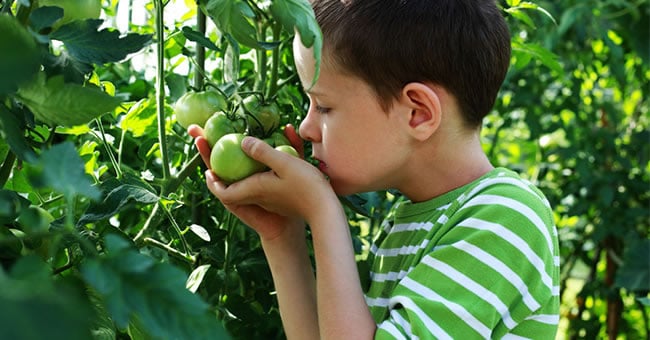
There's a reason school and classroom gardens have been growing in popularity–gardening works exceptionally well as a comprehensive hands-on learning tool, especially for STEM-related topics. A recent article on the U.S. News & World Report website highlighted the efforts of REAL School Gardens, a nonprofit organization that brings educational learning gardens into low-income elementary schools. When asked of the effects these school gardens have, Jeanne McCarty, the executive director of REAL School Gardens, stated that schools with installed gardens see an average increase of 12-15% in students' standardized test pass rates, with science often having the largest gains.
Gardening is also a learning tool that is appropriate for children or adults of any age. Early childhood providers and preschool programs can use gardens to provide multisensory learning experiences and to give children a strong foundation in basic STEM concepts. Elementary educators can then utilize gardens to expand on children's previous knowledge and to reinforce what children are learning in class. Gardening can also expose children to science and other STEM disciplines at an earlier age, which will increase the likelihood of them studying or working in a STEM-related field later in life.
Here are just a few of the ways you can use gardening to support STEM-based learning in the classroom:
- Science: Older children can study plants and insects, learn nutrition skills, observe the effects of weather, and learn about more advanced science topics. Young children can feel the textures of different plant leaves, help water plants, and learn a variety of basic science concepts.
- Technology: Weather and soil tools often used in gardens are a great way to discuss technology with older kids. You can also discuss machines and technology used in larger gardens or in farming. For younger kids, its best to remember that technology is really anything made by humans. Garden tools and other basic items are great conversation starters for how technology is used in gardens.
- Engineering: Building and planting a garden is great engineering and design practice. This is why it's important for you to involve kids as early as the planning process. Have them decide where the garden would best be located, but make sure they consider the amount of sunlight, proper drainage, and other important factors that affect how gardens grow.
- Mathematics: Gardening is a great way to promote a variety of math concepts for preschool and elementary students. Counting, size, shape, proportion, fractions, multiplication, etc. are all math topics that children can learn while gardening. Young children can count how many tomatoes are on a vine, for example, and older kids can problem solve to figure out how much they would have to sell 20 tomatoes for to make a profit.
If you're an advocate of STEAM, gardening also provides a variety of creative art opportunities. Children can draw or paint pictures of the plants, flowers, and insects they see in the garden, or they can make their own flower bouquet as a creative project.
Gardening is a great learning activity for teaching STEM. Just be sure to make gardening intentional and educational by planning educational opportunities and objectives for kids. Browse our plants and gardening materials for gardening tools and kits you can utilize in your school or classroom garden.
